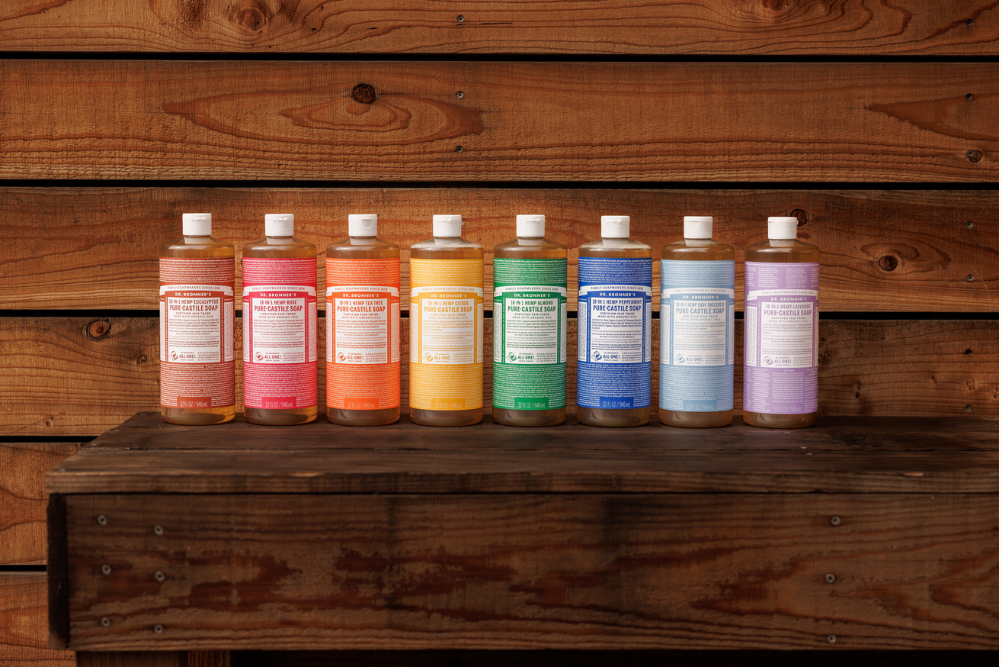Have you heard of soapberries? They’re our new sustainable-living friends
When and why did you start following a sustainable lifestyle?
My husband was diagnosed with cancer in 2002 and after undergoing seemingly successful treatment we thought he was cured. Then in 2006, when I was heavily pregnant with our first child, the cancer returned with a vengeance. It was a truly awful experience for us and one that changed our lives forever. This tragedy became the catalyst for complete change. I decided we needed to know exactly what we were putting into our bodies and what changes we could make as a family to ensure our health and wellbeing for the future.
We switched to eating organic food and I began to look further into the chemicals in everything from cleaning products to cosmetics. I was shocked to discover the extent of the risk we are actively exposing ourselves to every day.
With this new organic lifestyle, I was still struggling to find an organic option for the laundry.
After a few years of living our new lifestyle, I wanted to take our sustainable pursuits one step further and we began the process of building an eco house and sustainable organic Garden in the Adelaide Hills.
We built our new home using chemical-free paint, all-natural carpet and ethically sourced materials. We attempted to make the building as passive as we could and the design of the garden was given priority. We have approximately 40 garden beds, 100 fruit and nut trees and a dozen chooks across 1500 square meters — it’s an organic paradise for our kids!
How did That Red House first begin?
In 2013, not even two years after we moved into our sustainable Home, we were asked to open the garden to the public as part of the Adelaide Food & Wine Festival and in one day we had over 1300 visitors come through our humble little property. It was amazing and it ultimately allowed me to meet and connect with more like-minded people who were passionate about sustainability and organics.
With this new organic lifestyle, I was still struggling to find an organic option for the laundry. We had a grey water system in place to send all the excess water into the vegie garden but I really needed a 100 per cent chemical-free, biodegradable and preferably organic detergent that actually worked. So again, after much research, I discovered soapberries. I then used them for a few years before deciding to take the plunge myself and start That Red House and I haven’t looked back since.
What are soapberries?
Soapberries are the fruit of the Sapindus mukorossi tree, which is native to Nepal. They contain a substance called saponin, in the flesh of the fruit, which acts as a natural soap. They have been used for thousands of years throughout the Himalayas for a multitude of purposes but most popularly as soap. They are picked, dried in the sun, deseeded and packed. No chemicals are used at any stage of the process and they are 100 per cent certified organic.
How do you use soapberries?
Soapberries are very easy to use. Simply add five shells to the little cotton bag provided and pop them in the wash with your clothes. That bag will do around five loads of washing and when they are finished they can be added to the compost to break down naturally. You can also boil them and make a huge range of cleaning products, shampoo, body wash and even shaving cream. You can find all of those recipes and more on our website.
What are the health benefits of soapberries?
Soapberries allow us to clean our clothes effectively while eliminating chemical absorption. Our skin is the biggest organ in our body and is soaking up the chemical residue left in our clothing fibres all day, every day. Unlike food, there is no legislation forcing detergent manufacturers to disclose the ingredients that they use in their products so we are taking in massive amounts of chemicals without even realising it. Soapberries are free from chemicals, making them great for anyone who has skin conditions, delicate baby skin or allergies of any kind.
How do soapberries help preserve the environment?
The soapberries themselves are fully compostable and leave no residue that can damage the environment. Although they grow wild in the Himalayas, the trees themselves have been destroyed in recent times and used by the Himalayan communities for firewood and other domestic purposes. The extent of deforestation has been widespread and significant so, through the purchase of our berries, the farmers and landowners are provided with income that also guarantees the survival of the trees. We have also worked very hard to make the shipping and packaging of our soapberries 100 per cent waste free, ensuring our carbon footprint is zero.
Please tell us about your Grow Nepal initiative.
We recently travelled to Nepal to visit the communities that are responsible for harvesting our berries. While very confronting, it gave me a clear idea about our social responsibility to assist the Himalayan people. The Grow Nepal initiative was established to support these communities, providing them with sustainable income opportunities and a focus on improving their overall standard of living. We are in the process of establishing a joint project focusing on setting up women’s healthcare facilities in remote areas of Nepal. As a company owner, mother and a woman, I resonate strongly with the challenges that these women face on a daily basis. It’s something that I’m very passionate about and can’t wait to make a significant difference in the lives of these people.








